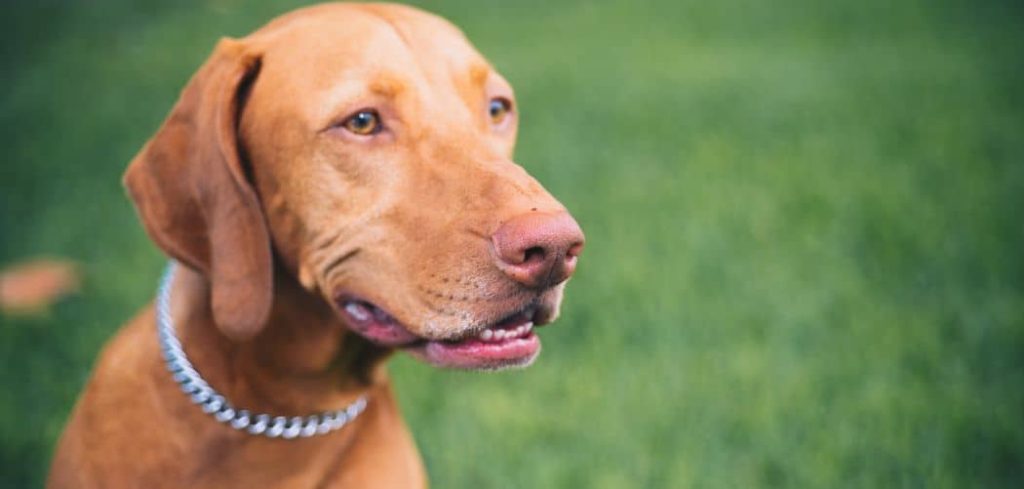If your dog is dehydrated and not eating, it’s more than a minor concern. Dogs rely on water for every vital body function, and when hydration drops—especially alongside appetite loss—it can signal an underlying issue that needs attention fast.
Whether it’s mild dehydration from a hot day or a more serious illness affecting your dog’s appetite and fluid balance, recognizing the symptoms early can make all the difference.
Dog Dehydrated and Not Eating — Why It Happens
When a dog is dehydrated and not eating, it may be caused by vomiting, diarrhea, heatstroke, kidney disease, infection, pain, or chronic illness. Appetite loss and dehydration often go hand in hand—either because the dog feels too unwell to eat and drink or is losing fluids faster than they can replenish.

Dog Dehydrated and Not Eating: Common Causes
1. Vomiting and Diarrhea
One of the most common causes of dehydration and appetite loss in dogs is an episode of vomiting, diarrhea, or both. Gastrointestinal upset leads to rapid fluid loss—and the discomfort often causes dogs to stop eating and drinking.
Look for:
Watery or bloody stools
Frequent retching or vomit
Lethargy and weakness
Dry, tacky gums
Mild GI upset may resolve on its own, but prolonged fluid loss requires vet intervention to avoid serious complications.
Related: Dog vomiting and not eating (Causes and when to worry)
2. Heatstroke or Overheating
Dogs are prone to heat-related illnesses, especially in hot weather or after vigorous activity. When the body overheats, dogs pant heavily and can lose moisture faster than they take it in—leading to dehydration, weakness, and refusal to eat.
Warning signs:
Heavy panting or drooling
Bright red or pale gums
Vomiting or staggering
Collapsing or lying down suddenly
Move your dog to a cool, shaded place immediately and offer water. In cases of heatstroke, emergency care is essential.
3. Kidney Disease
Chronic kidney disease causes dogs to lose large amounts of water through urine, making it difficult to stay hydrated. It also impacts appetite and digestion, leading to nausea and refusal to eat.
Common symptoms:
Increased urination
Bad breath with a metallic odor
Weight loss and lethargy
Dehydration despite drinking water
Kidney disease is manageable with diet changes, hydration therapy, and medication under your vet’s guidance.
4. Infection or Fever
Systemic infections—like urinary tract infections, tick-borne diseases, or respiratory illnesses—can trigger fever, dehydration, and appetite loss.
Signs include:
Warm ears and nose
Shivering or chills
Labored breathing
Sudden disinterest in food and water
Bloodwork or urinalysis may be needed to confirm infection and begin treatment with antibiotics or other medications.
Related: Dog diarrhea and not eating (Causes and when to worry)
5. Pain or Injury
Dogs in pain—whether from arthritis, injury, dental disease, or abdominal discomfort—may become withdrawn, avoid movement, refuse food, and stop drinking normally.
Pain-related clues:
Whimpering or groaning
Slow posture changes
Avoiding touch or hiding
Shaking or restlessness
Addressing the root cause of pain often restores both hydration and appetite.
6. Chronic Illness
Dogs with diabetes, liver disease, cancer, or other chronic conditions often exhibit poor appetite and dehydration as part of disease progression or medication side effects.
Symptoms vary but may include:
Weight loss
Poor coat condition
Vomiting or fatigue
Reduced interest in food or water
Ongoing veterinary care, diet adjustments, and hydration support can improve quality of life for dogs with chronic illnesses.
What to Do If Your Dog Is Dehydrated and Not Eating
If your dog is mildly dehydrated and not eating, here are practical steps to try at home:
Offer ice cubes or crushed ice as some dogs prefer chewing to drinking
Provide unseasoned chicken broth to entice hydration and gentle nutrition
Try wet food or water-diluted kibble for easier consumption
Encourage licking with frozen treats like ice cubes made from bone broth
Monitor urination and stool output to track fluid balance
If symptoms last more than 24 hours or worsen, contact your vet right away.
How to Check for Dehydration at Home
Use these simple tests to evaluate hydration status:
Gum Test: Gently press your dog’s gums. If the color doesn’t return within 1–2 seconds, your dog may be dehydrated.
Skin Tenting Test: Pinch the skin at the back of the neck. In well-hydrated dogs, it snaps back quickly. If it stays tented, that’s a sign of dehydration.
Eye and Nose Check: Sunken eyes and a dry nose can be indicators of fluid loss.
When to Call or Visit Your Vet
Call your vet immediately if:
Your dog hasn’t eaten or drunk water in over 24 hours
Vomiting or diarrhea lasts more than a day
Gums are dry, pale, or sticky
Your dog seems lethargic or confused
There’s no urination for 8+ hours
Severe dehydration can quickly become life-threatening and may require IV fluids and lab tests.
Read more: Dog depressed and not eating (Causes and what to do)
Key Takeaway
If your dog is dehydrated and not eating, don’t wait too long to take action. Whether it’s due to illness, heat, or internal distress, dogs can’t go long without fluids and nutrients. What may start as a mild case can quickly escalate into a more serious problem.
Trust your instincts and call your vet if symptoms persist. With quick intervention and supportive care, your dog has an excellent chance of bouncing back to health.
